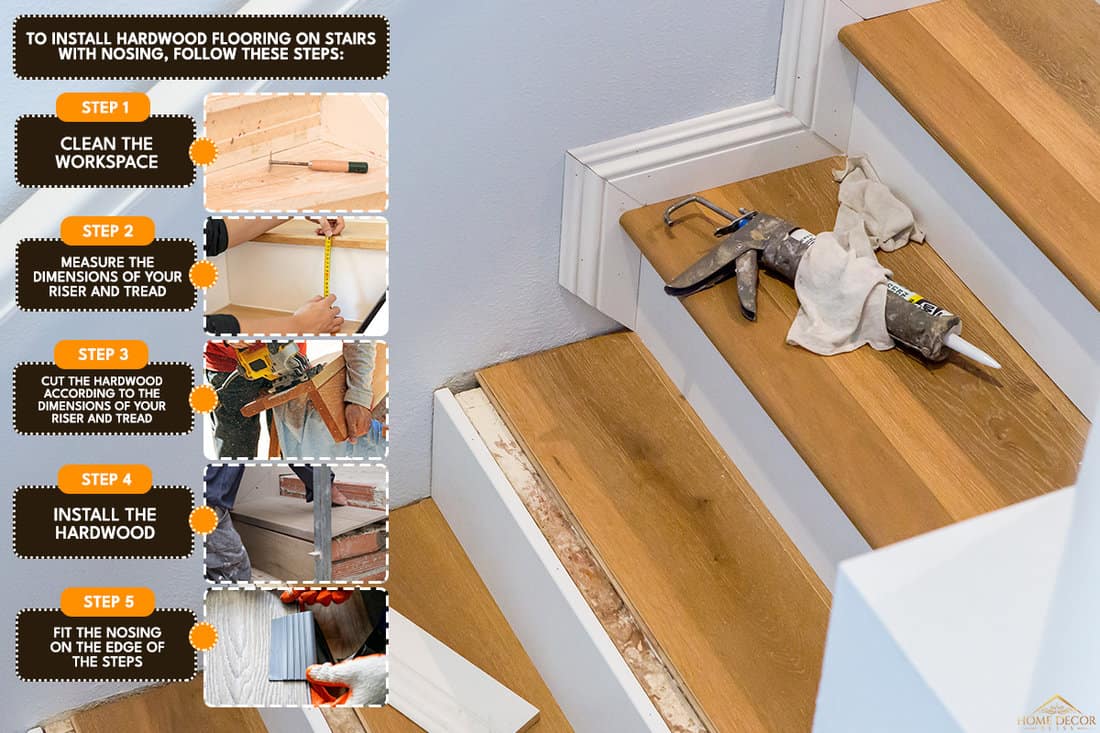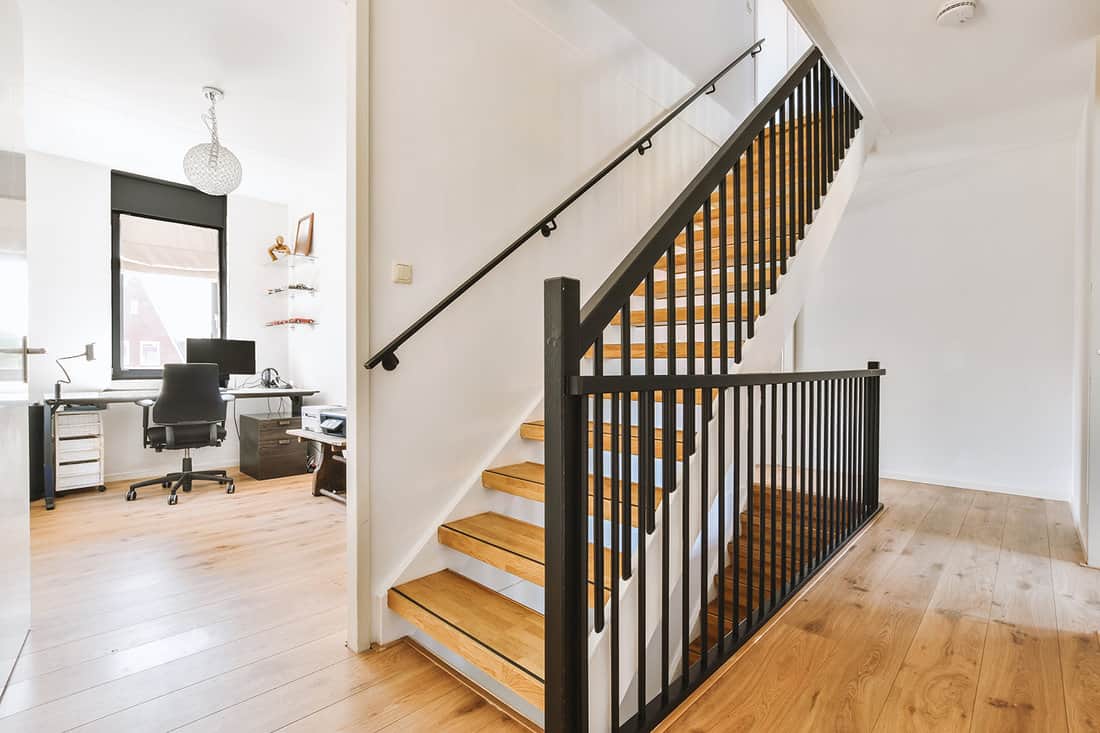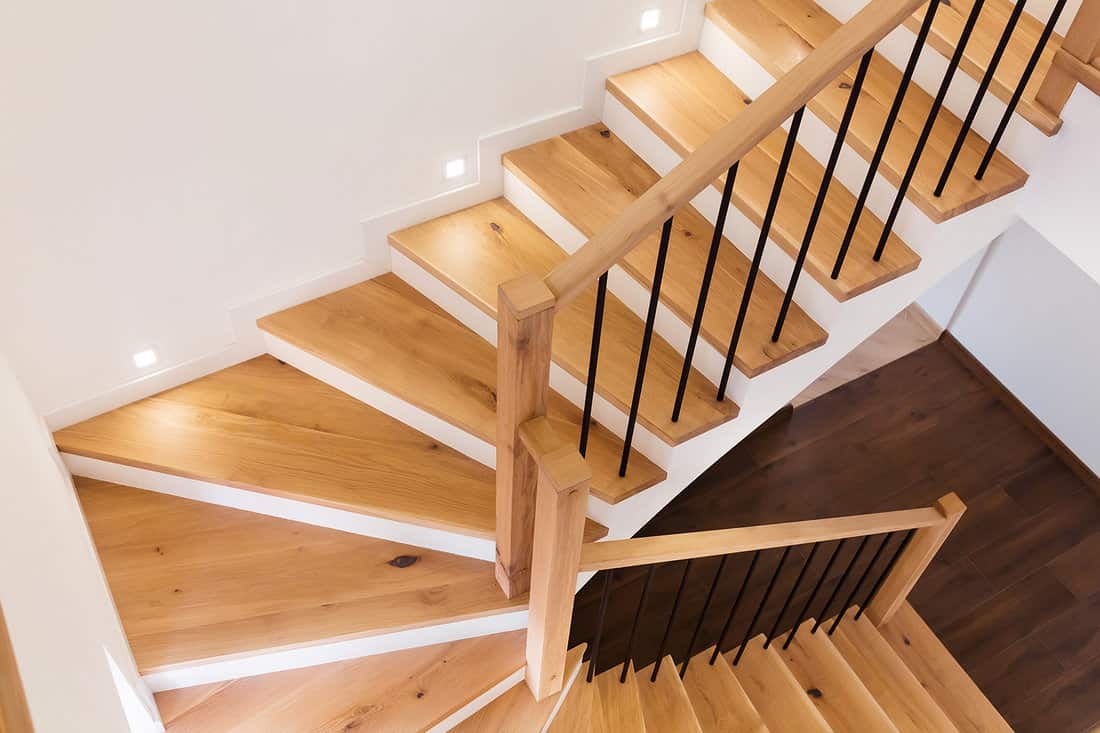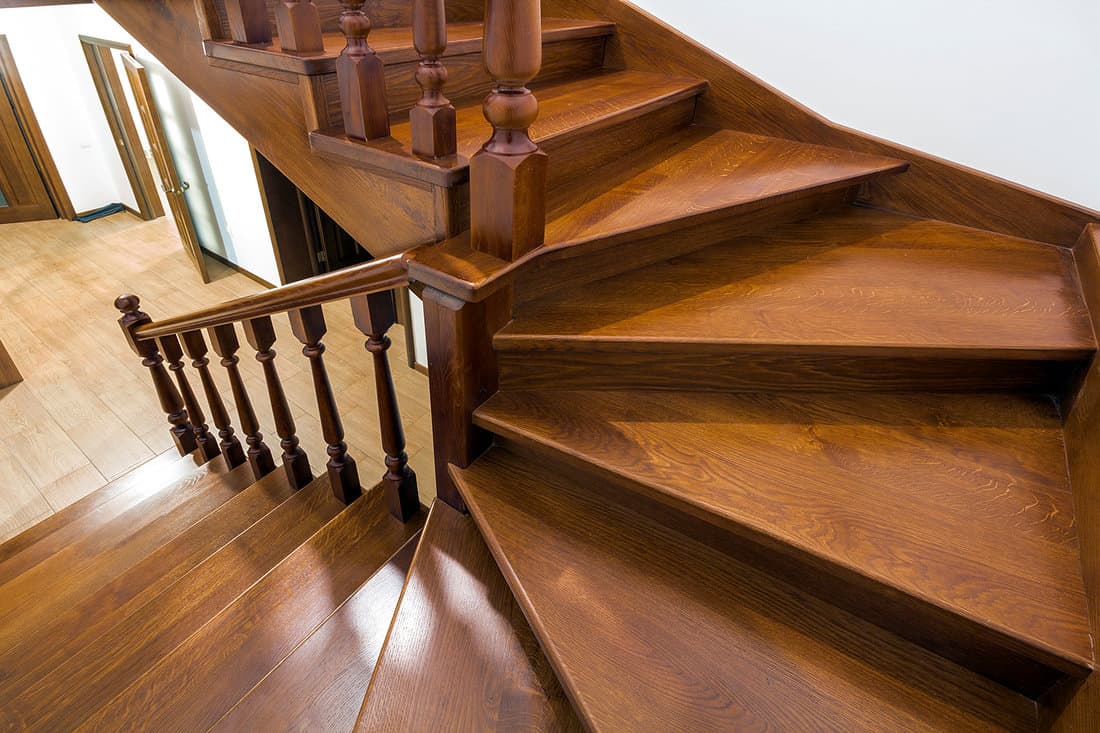Nosing is an effective way of adding protection to your staircase, while hardwood is a popular flooring choice for stairs due to its adaptability to the overall interior. Are you planning to install hardwood on stairs with nosing but have no idea how to go about it? We've researched this topic to help you!
To install hardwood flooring on stairs with nosing, follow these steps:
- Clean the workspace
- Measure the dimensions of your riser and tread
- Cut the hardwood according to the dimensions of your riser and tread
- Install the hardwood
- Fit the nosing on the edge of the steps
The process may seem complicated, but we will get into more details about each step to help you install your hardwood flooring correctly, so keep reading to learn more. With that said, let's dive into it!

How To Install Hardwood Flooring On Stairs With Nosing
Along with handrails, nosing, also called edging, is a great addition to the safety features of your home. It prevents slips on the stairs by giving the steps an extra space over the edge of the stairs.
Nosing also protects the edges from any sort of damage over time. Although it is not a requirement, properly installed nosing can give extra style to your staircase's overall look and provide safety and protection.
Hardwood is a great choice for flooring due to its stylish and adaptable look, durability and strength. White oak, ash, and walnut are the most common hardwood types used on stairs.
Here is how you can install your hardwood floorings with nosing.
1. Clean The Workspace
Before you proceed to the actual work, you have to make sure that your workspace is free from any obstacles or dirt.
If you are renovating an old staircase, you will need to strip off the carpet. Don't forget to remove nails and staples so they don't get in the way of the hardwood installation.
2. Measure The Dimensions Of Your Riser And Tread
The horizontal part of the staircase is called the tread, while the vertical part is the riser. Getting the correct dimensions for both is important when installing hardwood flooring.
To measure the length and width of the tread and riser, simply place the tip of the measuring tape on one side and run it over the step until you reach the edge.
If you haven't installed your stairs yet, the standard size for riser and tread ranges from 8-10 inches length and 22.5-30 inches width.
On the other hand, the standard length of nosing is around 3/4 inches to 1 1/4 inches.
3. Cut The Hardwood According To The Dimensions Of Your Riser And Tread
Once you are done getting the correct measurements, it is time to chop the wood according to the exact size of your risers and treads.
In terms of angles, the recommended angle for stairs is 37°.
4. Install The Hardwood
After cutting all the planks you will need, you can install the hardwood. You should begin the installation process from the bottom and make your way up.
Make sure that you use a reliable adhesive to secure the hardwood to your stairs. Once you are done bonding the planks of wood to the stairs, you can proceed to the final step.
5. Fit The Nosing On The Edge Of The Steps
Using an adhesive to bond the nosing and the flooring together, secure each piece in place, starting from the bottom of the staircase.
Do not use too much glue when doing so. Instead, use 3-4 nails to hold the nosing in place. After that, use a filler to hide the nail heads. You can also stain the nosing to match the hardwood to cover up the filler.
We may include affiliate links and curated AI content to highlight top design styles.
Click here to see this ready-made stairs nosing on Amazon.
Can You Use Aluminum Nosing On Hardwood Flooring?

The answer is a definite yes. Aluminum is a versatile construction material that you can pair up with almost every type of product. You can match it with tiles, concrete, and, of course, wood.
Aluminum is known for its durability, and it's easy to work with. However, aluminum nosing is commonly a long strip that needs to be cut down to match the stairs.
Make sure that you smooth the edges before bonding it with wood flooring to keep the nosing from causing any danger.
Do You Have To Install Nosing?
Technically speaking, it is not possible to build a staircase without a nosing, since the word nosing is the term given to the outer edge of the tread that it overhangs.
However, if you are referring to the ready-made material glued on the edge where the riser and tread meet, there are a few alternative options to choose from.
Stair Tread

If you want to skip the nosing installation, you can just overlap the tread instead of letting it meet the top edge of the riser.
This method offers the same safety features a typical nosing can give. The only downside is it isn't going to be as visible as a nosing.
If you are planning to use this method instead, make sure to follow the standard size to ensure safety at home.
Laminate

Just like a regular nosing, laminate nosing hides the edge where the riser and tread connect.
This type of alternative nosing can be expensive, but laminate nosing is known for its durability and good visibility. It also offers the same protective features ready-made nosing can provide, making it worth its price.
See this laminate stair nosing on Amazon.
Hardwood
As a leading contender in the world of construction, hardwood is a great option for an alternative nosing. If you used hardwood for the flooring, you can use the excess hardwood to make nosing.
This will save you money, as you're upcycling excess wood, and allow you to create a smooth transition from the nosing to the tread.
Aside from its durability, hardwood can adapt to the overall look, depending on the materials you are pairing it with.
It can be more expensive than softwood, but it will be sturdy and shouldn't require frequent repairs or renovations.
Check out this hardwood stair nosing on Amazon.
Should I Install Carpet On My Hardwood Stairs?
Depending on your preference, you may or may not install carpet on your hardwood stairs.
Although carpets offer better cushioning than wood, bare hardwood stairs are easier to maintain than carpet.
In addition, hardwood can be more aesthetically appealing compared with carpet, although it's louder than carpet.
If you think you would like to try installing carpet on your hardwood stairs, know that putting carpet on your stairs can damage the wood since you have to use staples to secure the material in place.
Carpeted stairs are a great safety measure if you have kids or elderly people at home. But if you have a gorgeous hardwood staircase, and you want to skip the hassle of maintaining carpet, you should drop the idea of putting carpet over the hardwood.
Should Hardwood Stairs Match The Floors?

No, the stairs and flooring don't have to match, but you should try to make the stairs and flooring complement one another in order to achieve a better-looking interior design.
You can go for a darker shade of hardwood for the stairs to complement lighter-toned floors, or you can choose white oak for the stairs if the floor is white to make the stairs look elevated.
The decision will depend on the homeowner's preference. You are always free to style the stairs and flooring according to the design that you want.
After all, hardwood is a universal material which is easy to mix and match with other materials, so don't hesitate to unleash your creativity!
In Closing
Hardwood is a reliable material that can be used on stairs, while nosing is an important part that offers safety and an accent.
Just keep in mind the necessary factors you need to consider when installing hardwood floors on stairs with nosing, and don't forget to put safety first when renovating your home.
Before you go, don't forget to check out these related posts:
Why Are My Carpeted Stairs Slippery [And What To Do About It]?





